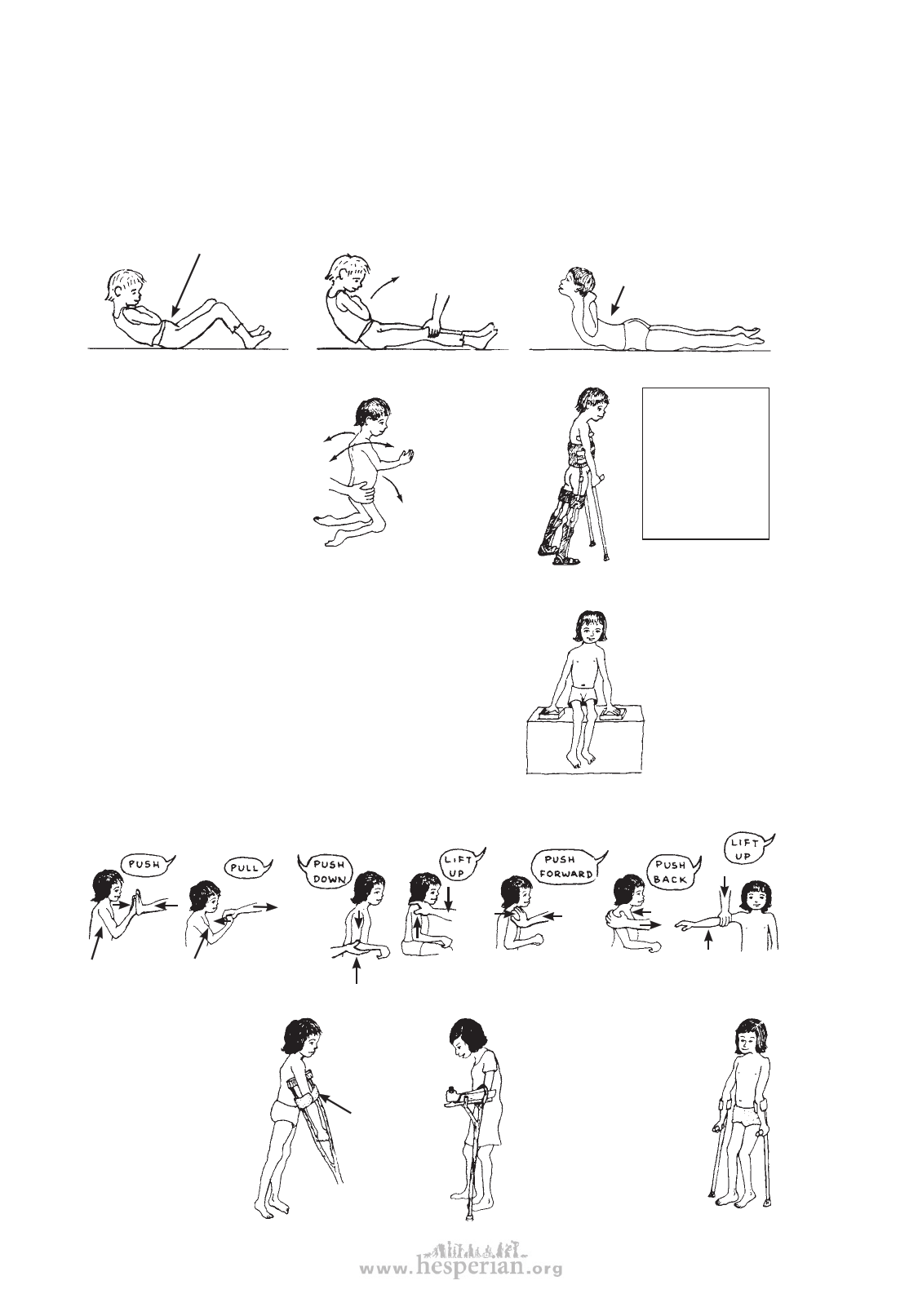
32 chapter 4
Stomach and Back
To find out how strong the stomach muscles
are, see if the child can do ‘sit ups’ (or at least
raise his head and chest).
Sitting up with knees bent uses (and
tests) mainly the stomach muscles.
Feel stomach muscles tighten.
Sitting up with knees
straight uses the hip-
bending muscles and
stomach muscles.
To test the back muscles,
see if he can bend
backward like this.
Feel the muscles tighten
on either side of the
backbone. Notice if
they look and feel the
same or if one side
seems stronger.
You can check a child’s trunk
control and strength of
stomach, back, and side
muscles like this. Have him
hold his body upright over
his hips, then lean forward
and back, and side to side,
and twist his body.
If a child’s
stomach
and back
muscles are
weak, he may
need braces
with a body
support—or a
wheelchair.
IMPORTANT:
Be sure to check
for curvature
of the spine—
especially in
children with
muscle imbalance
or weakness of the
trunk.
Shoulders, Arms, and Hands
When a child’s legs are severely
paralyzed but she has FAIR or
better trunk strength, she may be
able to walk with crutches if her
shoulders, arms, and hands are
strong enough.
Therefore, an
important test
is this.
Can she lift her
butt off the
seat like this?
If she cannot lift herself, check the strength in her shoulders and arms:
ARMS
SHOULDERS
If she can,
she has a
good chance
for walking
with crutches.
Muscles
tighten here.
Muscles
tighten here.
If the shoulder pushes
down strongly but her
elbow-straightening
muscles are weak, she
may be able to use a
crutch with an elbow
support.
like or
this like
this
elbow
support
Disabled village Children
Or, if her elbow range
of motion is normal,
she may learn to ‘lock’
her elbow back like
this. However, this
can lead to elbow
problems.